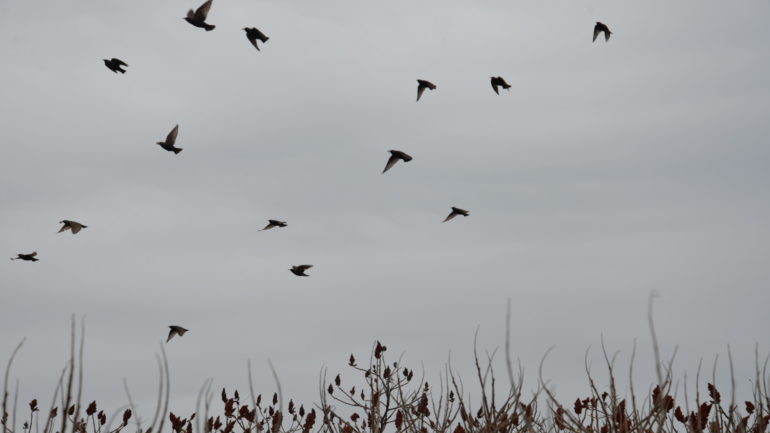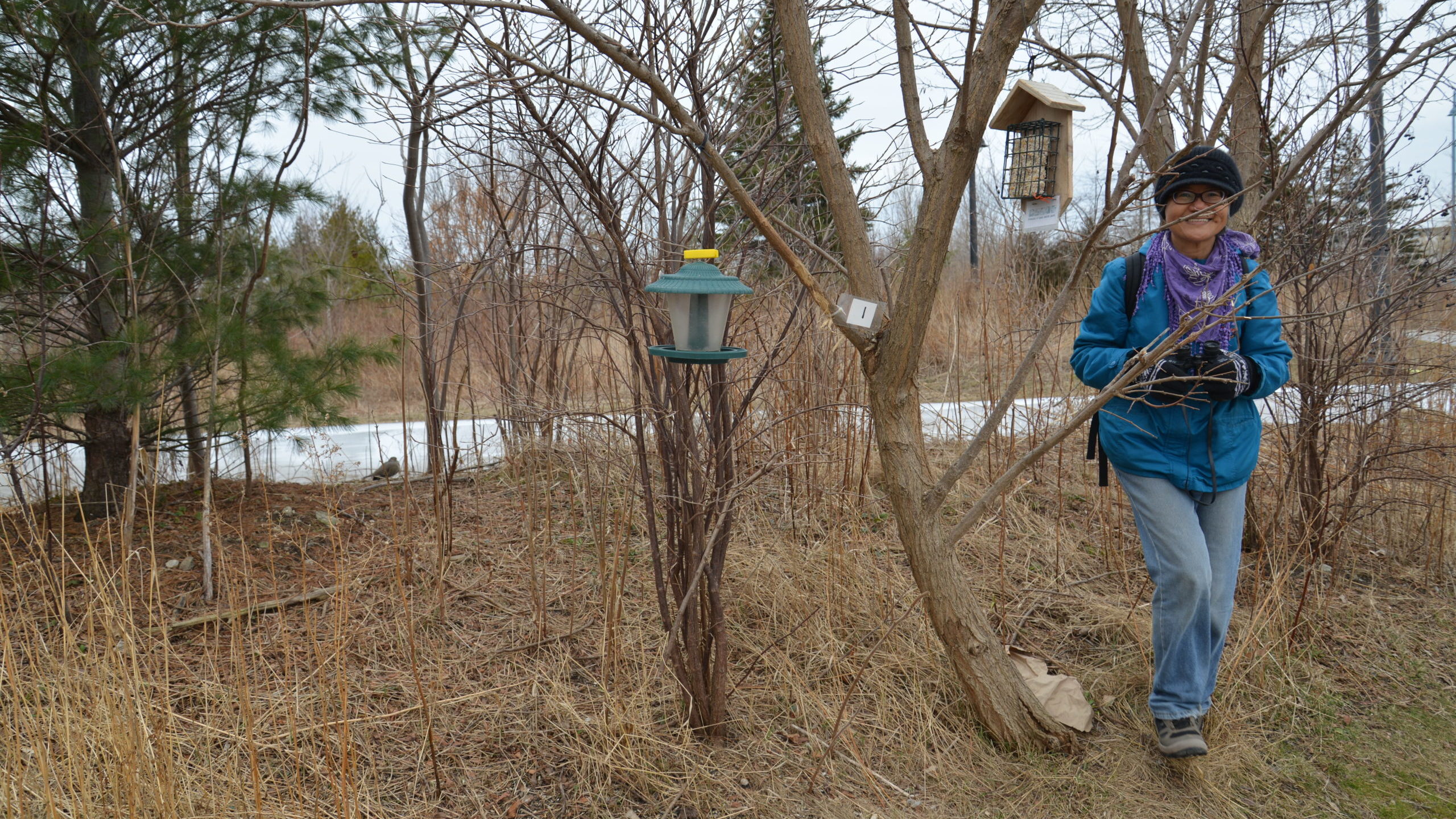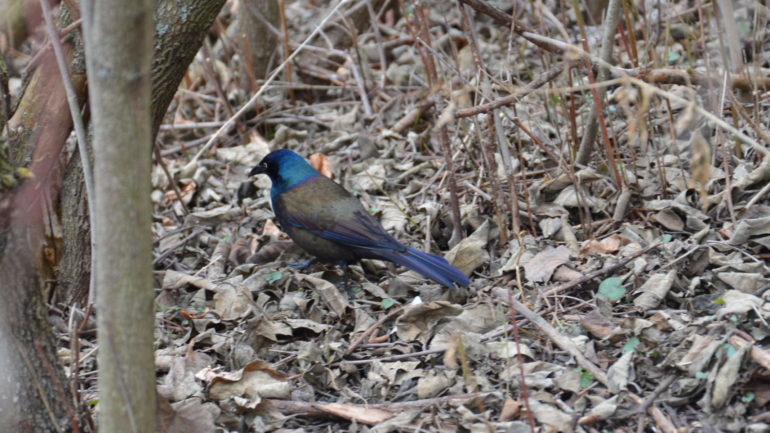
Kajal Mangesh Pawar
Toronto serves as a stop for many migrating birds on their way northbound.
Birds nesting in the Northern Hemisphere tend to migrate northward in spring due to an abundance of plant and insect population, according to allaboutbirds.org.
Colonel Samuel Smith Park is a major stop for several migrating bird on the arrival of spring.
The park, adjacent to Humber’s Lakeshore campus, is home to more than 280 species, according to bird.org.
Nan Chin, a 55-year-old bird watcher, insists on finding more spots for birdwatching even on days with -5 C temperature.

Nan Chin exploring Col. Samuel Smith Park near Humber Lakeshore Campus. (Kajal Mangesh Pawar) 
Nan Chin, watching birds at Col. Samuel Smith Park. (Kajal Mangesh Pawar)
The park is one of Chin’s favourite spots to observe the migrating spring birds.
“I have been birdwatching for the last five years,” she said.
“I used to be a part of a few clubs, but I don’t anymore. I like to go on my own. My main interest is really hiking, and along the hiking trail I see a lot go birds,” Chin said.
Red-winged blackbirds, warblers, common grackles, doves and Canada geese can be easily spotted at the park starting mid-March.

The best time of the day to see spring warblers is between 7 a.m. and 9 a.m., according to late Jim Baillie, an ornithologist at the Royal Ontario Museum.
Monika Croydon, with the Toronto Ornithological Club, said red-winged blackbirds are the first group to arrive.
“Songbirds and other woodpeckers will soon start to arrive and then in April, the warblers, the long-distance migrants from south and central America would start arriving,” she said.
Climate change has widely affected the arrival of spring migrants.
“The birds’ migration has a lot to do with climate. Like I said, our winters have been so mild we don’t see what we used to see,” Chin said.
High Park, Toronto Islands and Leslie Street Spit are bird watching hotspots in Toronto, according to a newsletter released by Ontario Field Ornithologists. Another hotspot is Cootes Paradise in Hamilton and in Bronte Woods in neighbouring Burlington.
Bird walks are frequently organized at these parks. However, the upcoming spring walks have been cancelled due to the spread of COVID-19.
“The parks are not busy and there’s lots of space between me and anyone else there but why risk it?” said Daniel Park, a Mohawk college student and birding enthusiast. “We’ve seen what’s happening in other parts of the world who didn’t take it seriously.
“Birdwatching may have to take backseat for a little while until everything is figured out,” he said.

